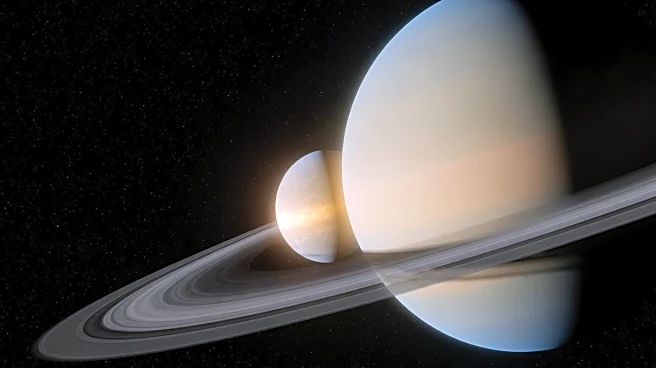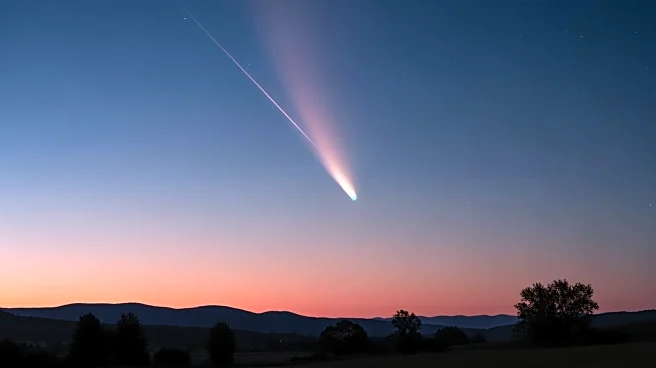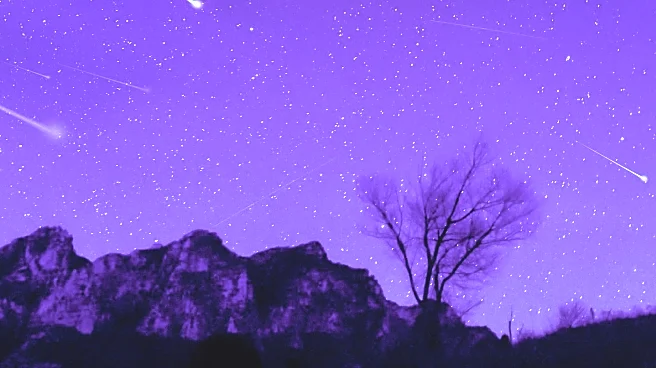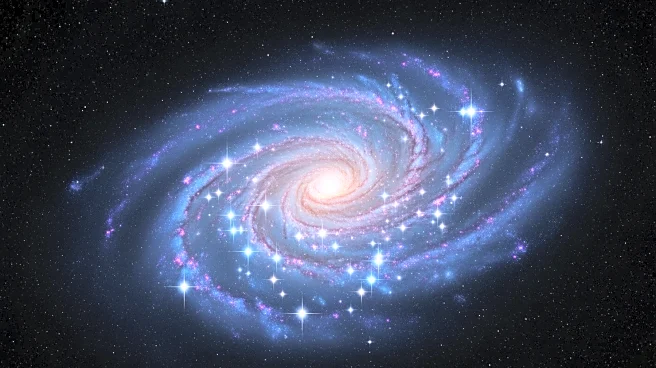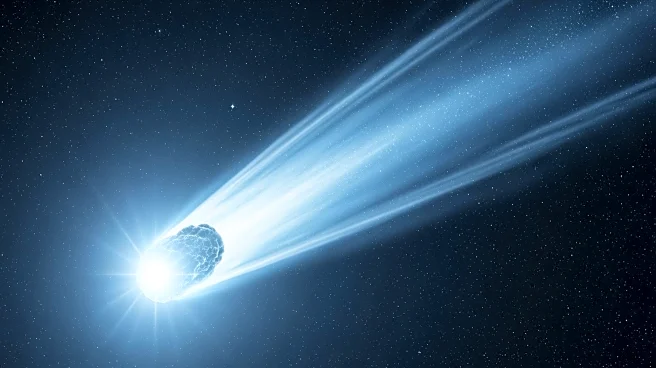What's Happening?
Saturn's moon Iapetus is currently at its western elongation, making it visible at its brightest, around 10th magnitude. This celestial event allows observers to view Iapetus approximately 10 arcminutes
west of Saturn. Saturn itself is observable post-sunset, shining at magnitude 0.8, and is accompanied by its moons Titan, Dione, Rhea, and Tethys. Tethys is undergoing a transit event between 6 P.M. and 9 P.M. EST, which may be challenging to observe visually. Additionally, the waning crescent Moon is performing an appulse with the star Spica, passing 1.2 degrees south of it at 6 A.M. EST. Venus is also visible near the eastern horizon, showcasing a 98 percent illuminated disk. These astronomical events provide a rich viewing experience for enthusiasts equipped with telescopes.
Why It's Important?
The visibility of Iapetus at western elongation is significant for astronomers and sky watchers, as it offers a rare opportunity to observe one of Saturn's moons at its brightest. This event highlights the dynamic nature of celestial bodies and their movements, which can be studied to understand more about the solar system's mechanics. Observing Saturn and its moons can provide insights into planetary formation and the characteristics of celestial satellites. The concurrent visibility of Venus and the Moon adds to the richness of the night sky, offering educational opportunities for those interested in astronomy and astrophotography.
What's Next?
As the celestial events unfold, astronomers and enthusiasts may continue to track the movements of Saturn's moons and other visible planets. The current visibility of Iapetus and other moons may prompt further observations and studies, potentially leading to new discoveries about their compositions and orbital dynamics. The ongoing visibility of Venus and the Moon may also encourage public interest in astronomy, leading to increased participation in sky-watching events and educational programs.
Beyond the Headlines
The observation of celestial events like the western elongation of Iapetus can inspire broader interest in space exploration and science education. It underscores the importance of preserving dark skies free from light pollution, which is crucial for astronomical observations. This event also highlights the interconnectedness of celestial bodies and the importance of continued investment in space research and technology to deepen our understanding of the universe.


